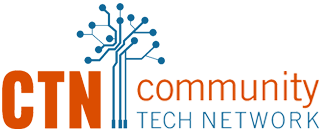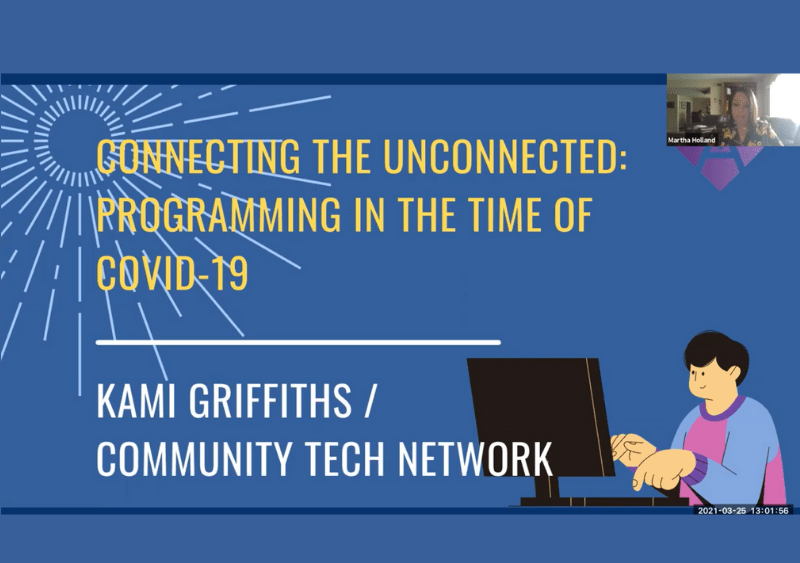The COVID-19 pandemic has made clear that the digital divide is a persisting problem in our country, and it’s not going to solve itself. As libraries and community centers remain closed and social services remain virtual, we have to make digital equity a priority. But what does it look like to get our communities active online? How do we start connecting the unconnected?
Recently, CTN’s co-founder and executive director Kami Griffiths presented a free webinar on just this topic. The event was hosted by Age Friendly of Santa Clara County as a part of their Digital Inclusion for Older Adults workshop series. Kami’s session, “Connecting the Unconnected,” specifically focused on programming in the time of COVID-19.
After discussing how the pandemic impacted CTN’s work, Kami emphasized the importance of understanding the needs of our communities before proposing solutions. Statistics on broadband connectivity and the digital divide are readily available on sites like Pew Research. For more community-focused data, it’s best to collect data from your community through a needs assessment.
In the remainder of the session, attendees learned immediate steps they can take to help their communities get connected. These include how to acquire low-cost devices, seek out affordable internet options, efficiently distribute devices, and set up training models to teach older adults how to use the internet.
In discussing each of these steps, Kami reflected on unexpected challenges and questions to keep in mind. What do your clients want to do online? How do their needs impact which type of device is best suited for them? What does the application process look like for low-cost internet options? And most importantly, how do you train your seniors how to use their devices remotely? CTN hopes to share what we’ve learned in the process of getting older adults online. Consider partnering with us!
To hear more, watch the full recording of the webinar available on the Age Friendly of Silicon Valley website.


Comments are closed.